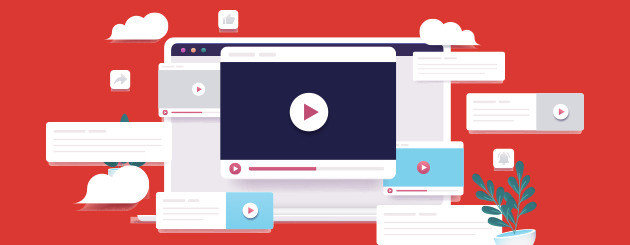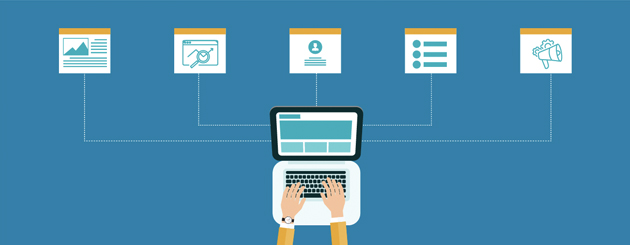



By Megan Hamby, Editorial Director
In 2017, Adidas sent an email to Boston Marathon finishers, with the subject line, “Congrats, you survived the Boston Marathon!”
I know what you’re probably thinking: “Oh no.” Just four years after the Boston Marathon bombing killed three people and injured 280, the sportswear giant sent this tone-deaf and insensitive email.
Even though the company issued a public apology on its social media accounts a few hours later, this blunder has become an object lesson to marketers, as one of the worst high-profile email mistakes we’ve ever seen.
As a marketer, you might be thinking, “Our company would never send something as egregious as that.” But without the right checks and balances in place, even the most seasoned marketers can press send on an email that could be read as insensitive or offensive.
So how can you avoid putting your foot in your mouth in your email marketing campaigns?
About Hammock Healthcare Idea Email | This post is part of Hammock’s award-winning Idea Email series. Idea Emails are sent every other week and share one insightful marketing idea. Idea Email comes in two flavors: Original and Healthcare. To subscribe to the original Idea Email (general marketing ideas), click here. To subscribe to the Healthcare Idea Email (healthcare marketing ideas), click here.

By John Lavey
You can find a lot of marketing content making the claim that human attention span is now shorter than that of a goldfish, but this seems to be unscientific research used by marketers to help pitch video as a replacement for text-based content.
But we do know getting audience attention is a huge challenge for marketers. Whether the problem is a shorter attention span, a general failure to provide engaging content, or both, a solution is needed.
One place to start is by creating websites that work. Websites often fail at answering one basic question: “What do you do?” That’s because, in part, the story is spread across different sections of the site, and the format that we have become used to expects us to click across a top navigation bar to get the answers we need.
One content tool that cuts through the clutter is explainer videos. Explainer videos are perfectly named. They explain what you do. This is particularly helpful if your solution is complicated or abstract. You don’t need an explainer video to market Coca-Cola, but you might need it to sell an SaaS platform that addresses a critical niche problem.
Here’s a test. Try to explain to your kids or to a casual acquaintance what you do. If you find yourself struggling to make an elevator pitch that is super clear and concise, you probably need an explainer video. If your kids’ eyes glaze over, then you need an explainer video. (Note: It would be highly unusual if your kids showed that level of interest in what you do, so you need something easy for them to remember.)
Explainer videos are usually 45 seconds to 90 seconds long. They often use simple animation with illustrations or photography, typography, music and voice-overs. You can build the imagery from scratch or use stock imagery creatively to tell the story. They have energy to propel the narrative, and when done well, they convey the problem the audience faces, what the solution looks like, and what the outcome will be.
Putting explainer videos on a prominent place on your website can go a long way toward making it easier to understand the value of your offering. Even if the attention span is closer to that of a goldfish (whatever that might actually be).
About Hammock Healthcare Idea Email | This post is part of Hammock’s award-winning Idea Email series. Idea Emails are sent every other week and share one insightful marketing idea. Idea Email comes in two flavors: Original and Healthcare. To subscribe to the original Idea Email (general marketing ideas), click here. To subscribe to the Healthcare Idea Email (healthcare marketing ideas), click here.

By Jeff Walter, Senior Editor
Everybody knows that search engine optimization (SEO) is crucial to 21st-century businesses vying for online market share, but it shouldn’t take precedence over the customer experience.
That last part is the main takeaway of Google’s new search algorithm, which it has dubbed the “helpful content update.” This change, the technology giant says, is “part of a broader effort to ensure people see more original, helpful content written by people, for people, in search results.” The update, announced August 18, was set to begin rolling out last week.
In a nutshell, the new system works by deploying a signal that detects and penalizes sites with high amounts of unhelpful content. Even helpful content will be less likely to perform well if other content on the same site is not helpful. This emphasis on quality over quantity means some businesses would be advised to remove website content that falls short of the standard.
What distinguishes helpful content from its evil twin?
To Google, it’s a matter of whether it was created primarily for people (and by people) or for search engines. Would the intended audience find the content useful, or feel let down by “click bait”? Does it demonstrate firsthand expertise, or is it simply others’ recycled wisdom with no value added? Will readers learn anything from it? Will they have a satisfying experience?
While analytics, traffic monitoring and website scanning can help organizations assess how they are faring with the new algorithm, a bit of soul-searching is also in order: What is the real purpose of the content we’re providing? At Hammock, we’ve long preached the gospel of “help not hype.” That means taking time to get to know the audience and what kind of information is likely to engage them, and then delivering it. Data, perhaps? How-to guides? Informed predictions about coming trends?
If you haven’t been providing helpful content, it’s not too late to change your ways. The pressure is on to share what you know!
About Hammock Healthcare Idea Email | This post is part of Hammock’s award-winning Idea Email series. Idea Emails are sent every other week and share one insightful marketing idea. Idea Email comes in two flavors: Original and Healthcare. To subscribe to the original Idea Email (general marketing ideas), click here. To subscribe to the Healthcare Idea Email (healthcare marketing ideas), click here.

By John Lavey, President
We view helpful content as one of the highest forms of marketing. Helpful content is superior marketing to content that hypes a solution.
Sometimes the most helpful kind of content, particularly for B2B marketing, is educating your customers and creating resources that they can use to do their jobs more effectively.
Helping educate your audience to help them be better at their jobs can take many forms. Here are three ideas:
User conferences
Many of our clients host user conferences, assembling a curriculum to introduce customers to the latest and best ideas about their job. These two-day or three-day events are big lifts for companies to put on, and they can be expensive, but they are viewed positively by customers.
Client universities
Some clients we’ve worked with have adopted the idea of themselves as a university, continually teaching their customers how to be better at their job. When the customers are a channel seller of their solution, it’s not only helpful but also savvy. The university model differs from the user conference model to the extent that the teaching and the messaging last beyond the three-day span. The investment in that kind of marketing spans year round.
Library of resources
This kind of content marketing offers clients a library of resources to help them do their jobs. Providing presentation decks, e-books, videos and more, marked with their branding so they can use them in their marketing or sales to clients, is good content marketing.
How can you help teach your client and sharpen your content marketing?
About Hammock Healthcare Idea Email | This post is part of Hammock’s award-winning Idea Email series. Idea Emails are sent every other week and share one insightful marketing idea. Idea Email comes in two flavors: Original and Healthcare. To subscribe to the original Idea Email (general marketing ideas), click here. To subscribe to the Healthcare Idea Email (healthcare marketing ideas), click here.

Every healthcare organization has stories to tell, and case studies based on success stories can be a powerful form of content marketing. A thoughtful and well-executed case study can:
Unfortunately, many organizations find it daunting to convert these stories into studies that produce results. They struggle with finding the right client or story to feature, they overcomplicate the story by getting bogged down in minutiae that nobody really cares about, or they fail to make the story relevant to a larger audience.
At Hammock, our decades of experience in helping healthcare industry clients tout their successes have taught us some essential lessons about what makes a great case study:
We would welcome the opportunity to talk with you about how we can help you turn your success stories into case studies that help you build on those recent successes.
Image: Getty Images
About Hammock Healthcare Idea Email | This post is part of Hammock’s award-winning Idea Email series. Idea Emails are sent every other week and share one insightful marketing idea. Idea Email comes in two flavors: Original and Healthcare. To subscribe to the original Idea Email (general marketing ideas), click here. To subscribe to the Healthcare Idea Email (healthcare marketing ideas), click here.

By John Lavey, President
With the labor market as tight as it is, it has never been harder to attract and retain talent. If your company is like some, the move to remote work means that you are no longer just competing with companies in your geographic area; you are competing against the rest of the world for the best people in your industry.
Finding ways to stand out from the competition and truly engage potential candidates for hire is hard to do, but using video to assist your recruiting efforts is a dynamic way to meet that challenge.
Short videos that tell authentic stories about who you are and why someone would want to work with you right now can cut through the details you will likely have to share in a job posting.
Here are some of the tips for what you will want in an effective video to accompany your recruitment postings:
Short—The most popular format for viewing videos right now is on TikTok, and the sweet spot for length of video there is 7 seconds to 15 seconds. Chances are you can’t communicate the value of a role in a TikTok video, but you should aim for brevity. There are industry-specific and platform-specific standards, but getting a video to 1 minute is a good goal.
Authentic—Letting your passion come through about your mission as an organization and why you care about what you do is important. It’s not so much what you say as how you say it. That energy is contagious.
Clear—Get to the point quickly, or create a clear call to action about what they can do next if interested. The platforms themselves can provide an assist here. But if it’s important, for example, to make it clear whether you are open to remote work, say it out loud.
Storytelling content is a critical part of every stakeholder journey, not just your customer journeys. Think about how you can help your prospective employees at each stage of their search. Video can help.
Image: Getty Images
About Hammock Healthcare Idea Email | This post is part of Hammock’s award-winning Idea Email series. Idea Emails are sent every other week and share one insightful marketing idea. Idea Email comes in two flavors: Original and Healthcare. To subscribe to the original Idea Email (general marketing ideas), click here. To subscribe to the Healthcare Idea Email (healthcare marketing ideas), click here.

We often take it for granted that a content calendar is part of the value we provide healthcare clients, but being able to provide timely, consistent, relevant and highly engaging content requires planning, a structured slate of content and an accompanying schedule.
For social media, blog posts and content campaigns, having a content calendar helps you avoid duplicating content, saves you from last-minute (poor) planning, and helps you visualize your content strategy well into the future.
Our approach to creating content for healthcare clients means creating content in advance while allowing room for timely opportunities to respond to something newsworthy that captures the attention of the audience.
Our experience over time is clients need real-time visibility (or close to that) into the status of projects in the works. So, creating a schedule in a shared, collaborative platform can be the basis for a good workflow.
The calendar, combined with status updates and performance reporting, feeds best practices and a great partnership.
Most companies can’t create content effectively on their own. It’s too specialized and expensive to create content across media types, distribute across multiple channels, and measure to determine success.
If you are struggling to share the great stories you have to tell, consider what it will require to stay on track. A content calendar is a wonderful start.
Image: Getty Images
About Hammock Healthcare Idea Email | This post is part of Hammock’s award-winning Idea Email series. Idea Emails are sent every other week and share one insightful marketing idea. Idea Email comes in two flavors: Original and Healthcare. To subscribe to the original Idea Email (general marketing ideas), click here. To subscribe to the Healthcare Idea Email (healthcare marketing ideas), click here.

By Megan Hamby, Editorial Director
Recently, one of our healthcare clients reached out and asked for our help brainstorming some new ideas. She had a white paper that her team had developed, but she wanted to find a few creative ways to repurpose the information into different forms of content.
I got to work immediately, highlighting sections of the 15-page white paper that I thought could be broken down into shorter e-books, strategy guides, tip sheets, infographics and more. I quickly realized that the white paper was chock full of insightful and helpful information that could be broken down into easier-to-digest pieces of content.
If you have a white paper, blog post, infographic or other piece of content that needs a new lease on life, consider repurposing (or upcycling) it. Turn a series of blog posts into a guide; turn an infographic into a video; or use testimonials published on your site on your social media. The possibilities are endless. Repurposing your content has a number of benefits, including:
> Reaching a new audience. Everyone learns differently and consumes information differently. Repurposing your content in a new format—such as an infographic, a video or even a podcast—can reach an audience segment that otherwise might not have found it.
> Boosting traffic. The main goal of repurposing content is to drive more traffic to your site—and improve conversion rates. One study found that organic search still holds the majority share among traffic sources. This means that publishing your existing content in new formats can boost traffic and drive conversions.
> Building credibility and strengthening messaging. Google likes credible, authoritative websites. Repurposing your content in new formats can help build credibility with Google because you have more content about a specific topic on your site. Plus, it strengthens your messaging, positioning you or your organization as a thought leader.
Ready to upcycle your existing content in new, fresh ways? Let us help.
Image: Getty Images
About Hammock Healthcare Idea Email | This post is part of Hammock’s award-winning Idea Email series. Idea Emails are sent every other week and share one insightful marketing idea. Idea Email comes in two flavors: Original and Healthcare. To subscribe to the original Idea Email (general marketing ideas), click here. To subscribe to the Healthcare Idea Email (healthcare marketing ideas), click here.

By John Lavey
Some people think about content marketing campaigns in healthcare as providing thought leadership, then pushing engaged leads into a call to action where they are entering the sales process. But sometimes that formula isn’t helpful enough, or you may want more tools to try when you are rolling out campaigns.
One option that some healthcare marketers are succeeding with includes deploying more collaborative content tools, where the call to action might be an interactive calculator tool or worksheets to help guide a collaborative session. That session might help a customer work through an approach to a problem.
This is a smart way to think about engaging your audience, as an alternative or supplement to e-books and webinars.
Developing interactive calculator tools is a terrific option if you can do it in a meaningful way that your customer will trust. There are lots of options for how to build calculators, or you can select an off-the-shelf option. If building out a tool is too big a lift, offering to take your customer’s data and come back with a savings estimate provides you an opportunity to maintain a consultative role.
One of our clients uses worksheets to facilitate a conversation with prospects. Given the complexity of the problems faced by some of your customers, this is a wise way to think about building a relationship. When you roll up your sleeves and sit down to help a prospective customer, it really changes the dynamic and builds trust.
If you want to be a truly consultative seller, then supporting your efforts with collaborative content marketing tools is something you should consider. It supports our highest aspirations: content that works!
Image: Getty Images
About Hammock Healthcare Idea Email | This post is part of Hammock’s award-winning Idea Email series. Idea Emails are sent every other week and share one insightful marketing idea. Idea Email comes in two flavors: Original and Healthcare. To subscribe to the original Idea Email (general marketing ideas), click here. To subscribe to the Healthcare Idea Email (healthcare marketing ideas), click here.

By Megan Hamby, Editorial Director
As marketers, we can often get bogged down in adhering to the “rules” or best practices of content marketing. How often should we post on social media? What’s the best time to send a weekly newsletter to customers? How frequently should we update our blog?
And the list goes on and on.
Do a quick Google search on “content marketing best practices” and you’ll find about 580 million results. And that advice is worthwhile—understanding your audience and buyer’s journey, using data and analytics, repurposing your content, and determining your brand messaging are all incredibly important when it comes to content marketing.
But I have another suggestion: Don’t be afraid to break the rules and do what works best for your company.
Recently, our team was speaking with the senior content specialist for one of our clients. He schedules a weekly newsletter to be delivered to customers and prospects every Friday at 5 p.m. EST.
That sounds crazy, right? Many studies suggest that the best time to send B2B emails is around 10 a.m. in the middle of the week. With that research in mind, sending an email at 5 o’clock on a Friday afternoon seems counterintuitive—but for this client, it works. He shared with us that his company has a 35% open rate (industry benchmarks are 17–28%) and receives 250–300 clicks on each email. When he shared this information with us, I was impressed—but also not surprised. That email newsletter is often the last email I receive before signing off on Friday afternoons, so I am guaranteed to open and read it. Our client wasn’t afraid to break the “rules” of email marketing—and his creative thinking yielded positive results.
What are some ways that your company can be creative with your marketing efforts? Contact us today if we can help.
Image: Getty Images
About Hammock Healthcare Idea Email | This post is part of Hammock’s award-winning Idea Email series. Idea Emails are sent every other week and share one insightful marketing idea. Idea Email comes in two flavors: Original and Healthcare. To subscribe to the original Idea Email (general marketing ideas), click here . To subscribe to the Healthcare Idea Email (healthcare marketing ideas), click here.